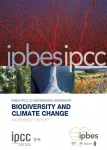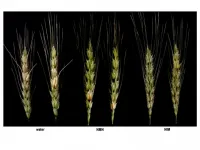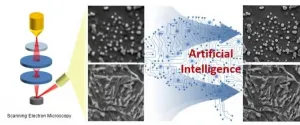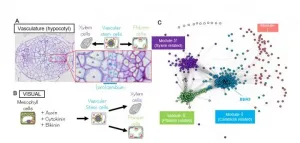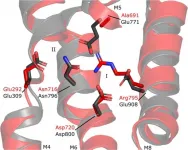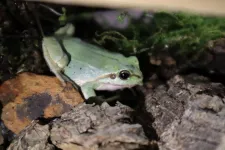Machines can help wine grape industry survive labor shortage
Study reviews best practices for growers
2021-06-10
(Press-News.org) Wine grape growers in California and elsewhere face increasing labor costs and severe labor shortages, making it difficult to manage and harvest a vineyard while maintaining profitability. Growers are increasingly turning to machines for pruning, canopy management and harvesting, but how well these practices are executed can substantially affect yield and quality. A new review by researchers at the University of California, Davis, published in the journal Catalyst, provides guidelines for growers to make the best use of machines.
"Wine grape laborers have been virtually nonexistent. People don't want to work in vineyards anymore because it's remote, tough work," said Kaan Kurtural, professor of viticulture and enology and extension specialist at UC Davis. "There is now machinery available to do everything without touching a vineyard."
Kurtural has designed a "touchless" experimental vineyard at the UC Davis Oakville Station to help growers understand how machines can help them cope with the labor shortage. While machines reduce the need for seasonal manual labor, they do not eliminate it. The degree of labor reduction depends on growing region, grapevine type and the number of practices growers mechanize.
The review provides guidance on using machines for winter pruning, canopy management and harvesting as well as how to design a grape vineyard for machines before planting. Videos showing the operation of different types of machinery and practices can also be found in the review.
Economic savings, quality grapes
About 90% of the wine grapes crushed in the U.S. are mechanically harvested. Previous studies have found about a 50% savings in labor costs from using machines to harvest instead of hand harvesting.
"Using more mechanization in a vineyard beyond just harvesting can also reduce labor costs without affecting grape quality." Kurtural said.
Mechanical pruning, for example, can save between 60% to 80% of labor operation costs per acre compared to manual pruning alone. One experiment in the San Joaquin Valley, where more than 50% of California's wine grapes are grown, also showed using mechanical canopy management machines to manage merlot grapes resulted in twice the amount of color. The more color, or higher anthocyanin concentrations, the better the quality. It can significantly improve returns from vineyards in California's heartland.
Kurtural said there are machines available to manage canopies, including machines for leaf removal, shoot thinning and trunk suckering. Kurtural noted that the machines are American made, developed by researchers at the University of Arkansas and commercialized by manufacturers in Fresno and Woodland, California.
INFORMATION:
The review was co-authored by Matthew Fidelibus, viticulture extension specialist at UC Davis. Financial support for the research came from the American Vineyard Foundation and Bronco Wine Company.
[Attachments] See images for this press release:
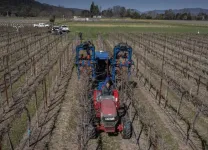
ELSE PRESS RELEASES FROM THIS DATE:
2021-06-10
BONN, 10 June - Unprecedented changes in climate and biodiversity, driven by human activities, have combined and increasingly threaten nature, human lives, livelihoods and well-being around the world. Biodiversity loss and climate change are both driven by human economic activities and mutually reinforce each other. Neither will be successfully resolved unless both are tackled together.
This is the message of a workshop report, published today by 50 of the world's leading biodiversity and climate experts.
The peer-reviewed workshop report is the product of a four-day virtual workshop between ...
2021-06-10
Kanazawa, Japan - Fungal diseases in cereal crops cause major economic losses and also threaten human and livestock health, because some fungi produce powerful toxins that might enter the food chain. Farmers use fungicides to control crop diseases, such as wheat head blight. Although agrochemicals are rigorously tested for safety, there can be concerns over chemical residues in food.
Now, researchers at Kanazawa University, in collaboration with colleagues at Ehime University and Nagoya University, have shown that the natural substance nicotinamide (NIM - a vitamin found in food and used as a dietary supplement) can help stimulate ...
2021-06-10
Curtin University researchers have helped uncover the four billion year old story of a lunar sample brought from the Moon to Earth, by the manned Apollo 17 mission more than 50 years ago.
The global research collaboration, involving scientists from the UK, Canada, Sweden and Australia, aimed to analyse the ancient rock sample through a modern lens to find out its age, which crater it came from and its geological trajectory.
That modern lens was provided, in part, by both Curtin's Geoscience Atom Probe Facility* and Space Science and Technology Centre* (SSTC) where the research team was ...
2021-06-10
With the onset of the 4th industrial revolution, artificial intelligence has recently been utilized in smartphone cameras, providing functions such as auto-focusing, face recognition, and 100x zoom, to dramatically improve our daily life. It has also been applied to research and development of new materials.
A joint research team from POSTECH and Korea Institute of Materials Science (KIMS) has applied deep learning to the scanning electron microscopy (SEM) system to develop a technique that can detect and improve the quality of SEM images without human oversight. The EMS is an essential material analysis equipment used for developing new materials. The findings from this research were recently published ...
2021-06-10
An inter-university research group has succeeded in constructing the gene expression network behind the vascular development process in plants. They achieved this by performing bioinformatics analysis using the 'VISUAL' (*1) tissue culture platform, which generates vascular stem cells (*2) from leaf cells. In this network, they also discovered a new BES/BZR transcription factor (*3), BEH3, which regulates vascular stem cells. In addition, they illuminated a novel vascular cell maintenance system whereby BEH3 competes with other transcription factors from the same BES/BZR family in order to stabilize vascular stem ...
2021-06-10
Cell viability require that a variety of functions at the cell membrane are maintained properly. P-type ATPases translocate substrates across the membrane, and they have evolved into different types taking care of specific substrates within a diverse range. Now, key structural aspects have been described on how two different types of P-type ATPases - a Ca2+ transporting Ca2+ -ATPase and a lipid transporting P4-ATPase - have adapted to different substrates and physical environments.
Many bacteria export intracellular calcium using active transporters homologous to the well-described ...
2021-06-10
Researchers from Tel Aviv University took part in a new international study proposing an amendment to the widely accepted theory on the extinction of animal species - by moving the focus from the animal's body size to its reproductive capacity. The researchers found gaps and incompatibilities between mammals and amphibians in the relation between body size and extinction risk: Whereas large mammals bear a smaller number of offspring per birth, leading to higher risk of extinction, larger amphibian females lay more eggs, reducing the threat to the species.
The researchers analyzed data from databases on both extinction risks and reproductive capacities of various species of amphibians (e.g., frogs and salamanders). Contributors to the ...
2021-06-10
How much do the effects of climate change contribute to extreme weather events? It's hard to say--the variables involved are plentiful, each event is unique, and we can only do so much to investigate what didn't happen. But a new paper from Lawrence Berkeley National Laboratory (Berkeley Lab) climate scientist Michael Wehner investigates the question for one particular element of one significant storm and makes the results available to those who lived through it.
In the paper, "Attributable human-induced changes in the magnitude of flooding in the Houston, Texas region during Hurricane Harvey," published May 19 in Climatic Change, Wehner and Christopher Sampson from Fathom Bristol used a hydraulic ...
2021-06-10
Even on a good day, DNA is constantly getting damaged.
Nicks, scratches, breaks: the delicate strands that carry life's genetic code take a beating as they jumble about in the course of their work. If left untreated, errors accumulate, with fatal consequences -- such as cancerous tumors -- for the cell and the organism.
This is where two key proteins come to the rescue: PARP -- or poly ADP ribose polymerase -- acts as a marker for a trouble spot, allowing XRCC1 -- or X-ray repair cross-complementing protein 1 -- to zoom in and begin a repair.
This much has been known for some time and was even recognized in the 2015 Nobel prizes ...
2021-06-10
A team of archaeologists from the Hebrew University of Jerusalem (HU) made a rare discovery when they unearthed a small clay seal impression dating back some 7000 years. The impression, with two different geometric stamps imprinted on it, was discovered in Tel Tsaf, a prehistoric village located in Israel's Beit She'an Valley up north.
The discovery was made as part of a dig that took place between 2004 and 2007 and was led by HU's Professor Yosef Garfinkel along with two of his students, Professor David Ben Shlomo and Dr. Michael Freikman, both of whom are now researchers at Ariel University. One hundred and fifty clay sealings were originally found at the site, with one being particularly rare and of distinct, historic importance. The object ...
LAST 30 PRESS RELEASES:
[Press-News.org] Machines can help wine grape industry survive labor shortage
Study reviews best practices for growers

